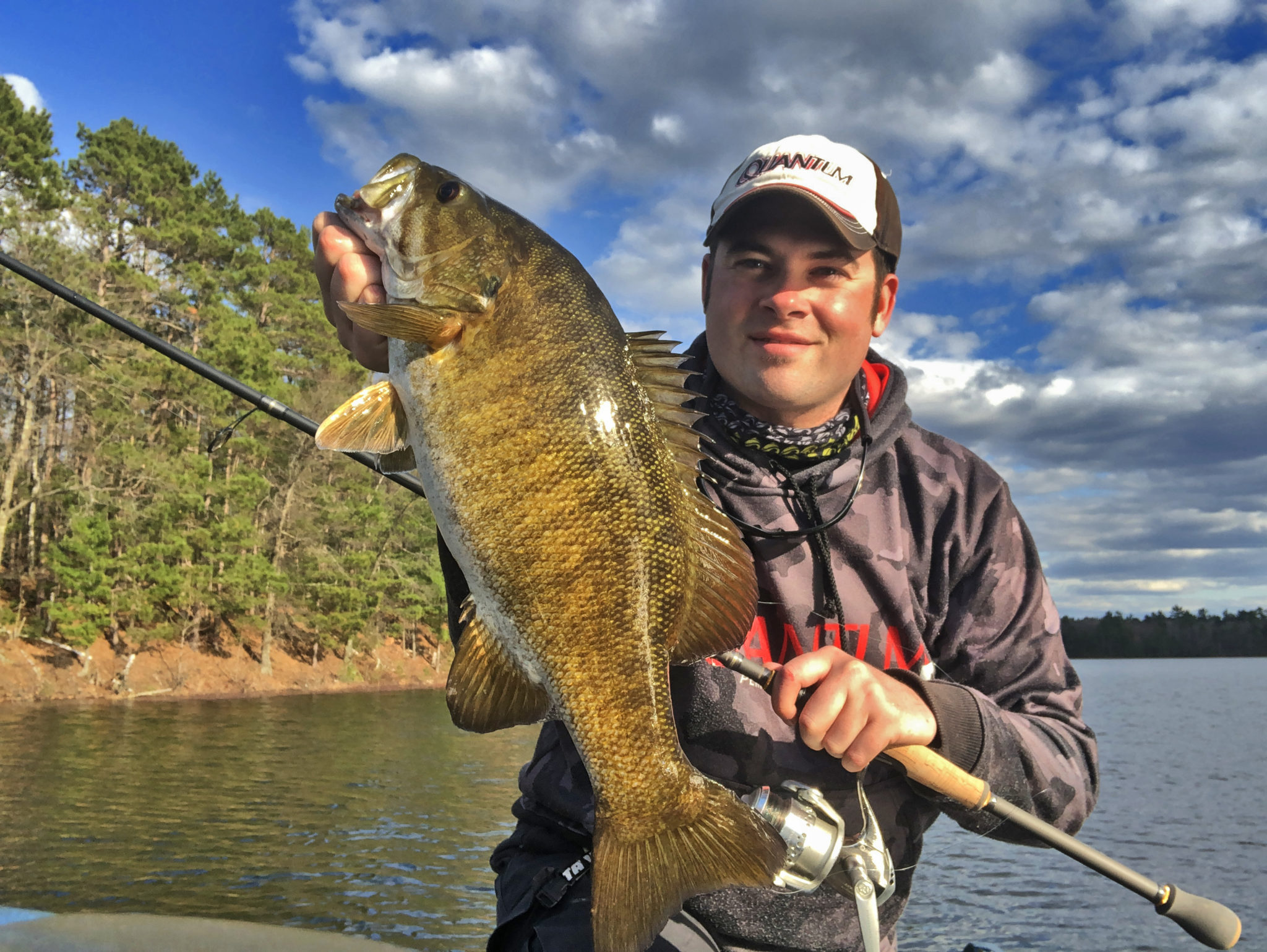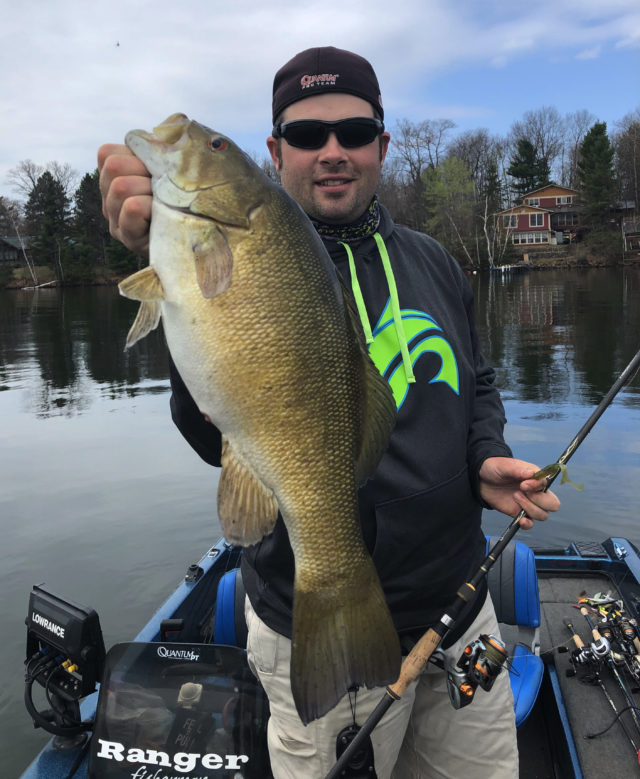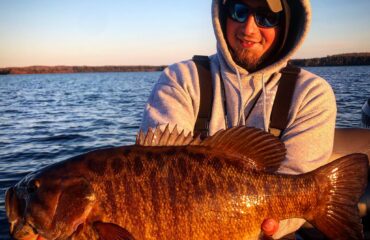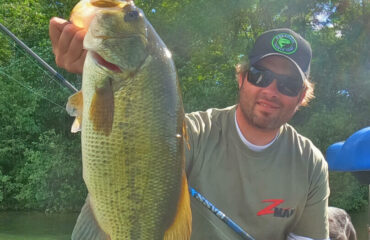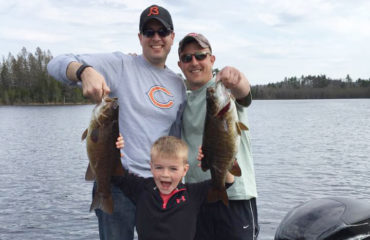Bass Advice for the Next Decade
By Andrew Ragas
The upper Midwest and Great Lakes states are home to some of the best northern bass fisheries in North America. Fishing seasons are open year-round in Illinois, Indiana, Ohio, Iowa, and under a mandatory catch and release in Michigan. Meanwhile in Wisconsin and Minnesota, anglers must wait until their gamefish season openers in May. Then in the foreign lands of Ontario, anglers can catch and release year-round but face more challenging ice conditions and much shorter growing seasons. Regardless of location, and the ice melt calendar or climate, the biggest connection we have is will be furthering our fishing abilities and intellect as soon as we resume 2020 fishing activity.
I have been fortunate to receive a comprehensive fishing education from some of the best minds and anglers in the history of fishing. I grew up idolizing writers, educators, communicators, tournament anglers, and some famous old-time guides of northern Wisconsin. Since graduating from college a decade ago and acquiring a few degrees in the process, fishing has been my secondary education and professional study ever since. The knowledge I have acquired has mostly come from these individuals, plus spending lots of time on the water to learn on my own. Additionally, nothing is more valuable than having cultivated interpersonal relationships, friendships, and mentorships under the tutelage of guides, tournament anglers, and fishing celebrities.
If fishing PHD’s were a real thing, then all of the educators who took me under their wing should all possess one and have doctorates in fishing and for mastering their craft. Some day, perhaps I’ll get there too.
Most fishermen are talkers and doers. The best ones lead, captivate, and back themselves up while on the water. Our fishing heroes have been there and done that, but won’t be at it forever. What we’ve learned from one generation ultimately gets passed down to the next generation. The fishing community has a unique way of paying it forward to all who are next in line. Each decade a new crop of influencers and educators spread the gospel of fishing to new audiences and readers. As we begin a new decade in bass fishing, I offer some unique personal insights and theories to help make fishing the Roaring Twenties more successful to you.
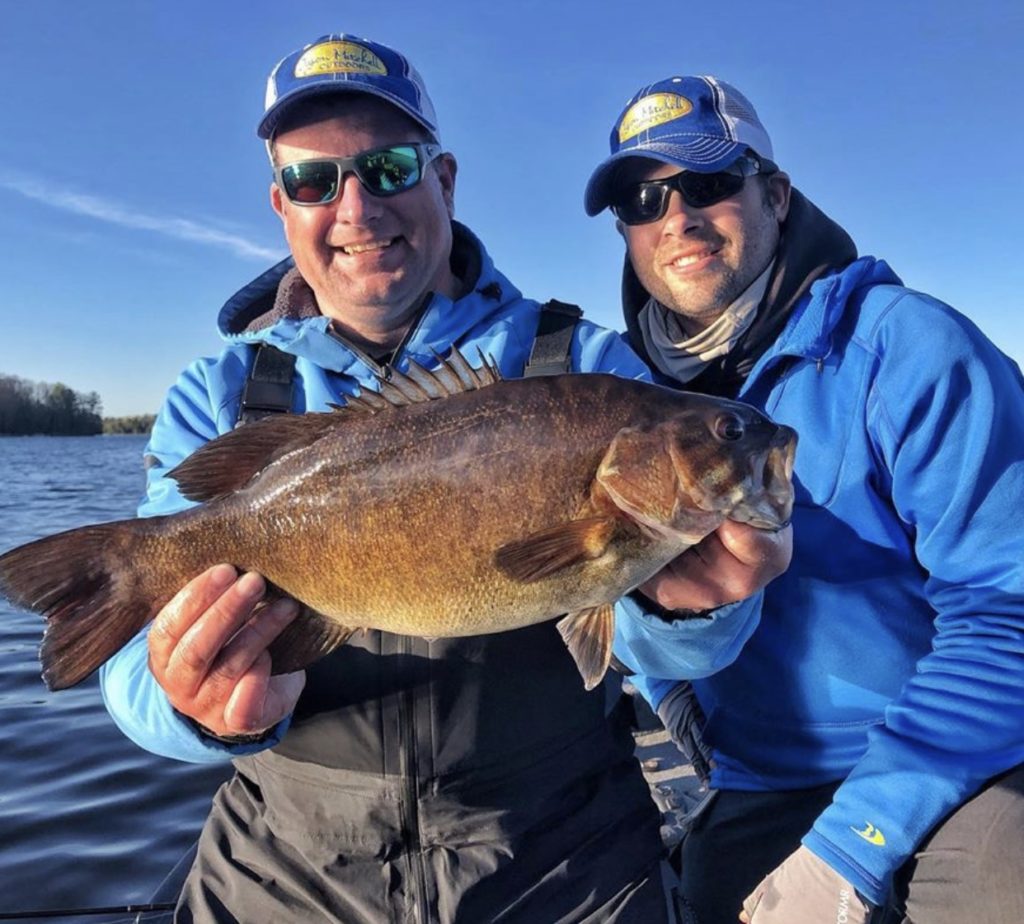
In recent years, I’ve made many friendships within the fishing community. These have resulted in media and programming collaborations. The author and fellow MWO contributor, Jason Mitchell, teamed up in May 2019 to film a spring smallmouth show.
Conquering Cold Water
In recent years, we’ve been trending from warm and mild winters to brutally cold winters and longer ice fishing seasons. This has led to late ice-outs, delayed spring seasons, and much colder water temperatures during the pre-spawn phase. Weather is cyclical, and I expect this trend to be ongoing for the next few (or more) seasons.
Beyond environmental and biological effects, cold weather and water temperature affects anglers mentally. Many anglers lack cold water confidence, and it kills their psyche. These last few guiding seasons, water temperatures have mostly dictated when my customers should book their early season trips. Few want to fish in early spring when water temperature is mid-40 degrees. Cold water has been responsible for having to frequently re-schedule May dates, or leads anglers to cancel their trips altogether. Most anglers can’t afford fishing in poor conditions. Can you blame them for delaying their trips in favor of waiting for peak periods, warming water, and favorable conditions?
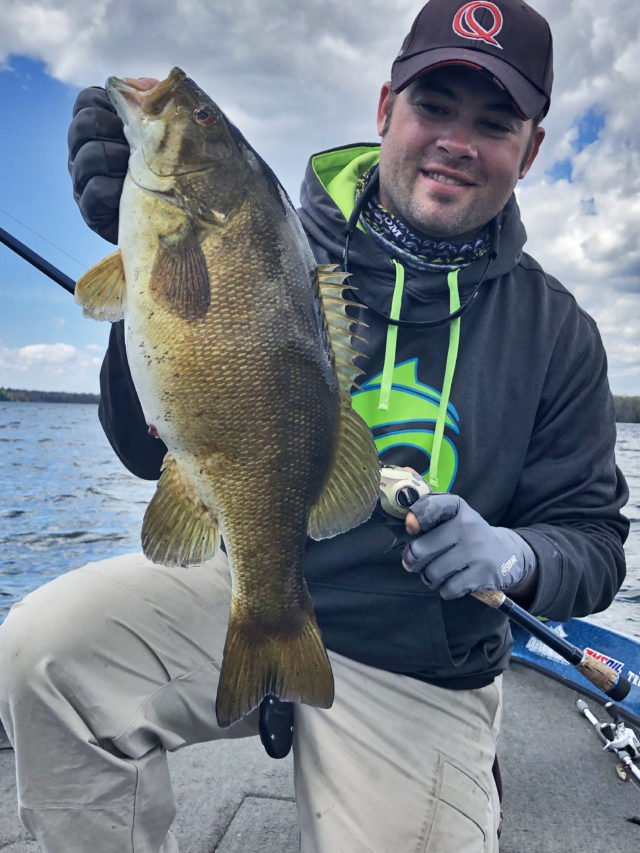
Cold weather and water temperature affects anglers mentally. Many anglers lack cold water confidence, and it kills their psyche. Remember, smallmouth have to slide shallow and feed regardless, so don’t bail on spring trips!
Cold spring climate and water temperature makes smallmouth more inactive. As a result, we must slow down our fishing too and refrain from the fast power and run and gun approach we are so accustomed to. When the aquatic ecosystem is dormant, so too will be smallmouth. Their behavior, feeding, and activity levels are always a product of their environment and weather conditions.
Fishermen prioritize gear and tackle very well, but not location. Majority of the smallmouth you will catch in spring are located at, or near, staging sites. At this time, fish are still moving and schooling together in heavy concentrations until they disperse and settle on spawning sites.
Most smallmouth anglers are bank beating and covering water in spring. While it’s a very successful strategy during the spawn season when a high percentage of the lake’s bass population invades the shallows, it’s the worst strategy for pursuing cold water, staging fish.
In May, my clients and I aren’t the only boat smallmouth fishing. We have company and competition on most lakes every day. While we target only these high-percentage locations and only a small fraction of the lake, most other boats don’t know of these staging sites and high percentage locations, and are combing every mile of shore length. When smallmouth are staging and concentrating on only a small scattering of precise locations throughout an entire lake, a high percentage of the lake is desolate and empty.
The allure of patterning and catching spring smallmouth during pre-spawn is the propensity of connecting with the largest and heaviest fish of the spring season.
Don’t enable the cold war influence spring fishing plans and affect your bass fishing psyche. The challenge and inconvenience of cold spring climate shapes smallmouth bass behaviors and feeding habits more so than the timing of their movements to established location. Regardless of cold water temperature, smallmouth are on the biological clock and must proceed with their spring motions. Remember, smallmouth revisit the same staging locations, spawning sites, and wintering holes annually. Additionally, their activity and behavior is a product of the environment surrounding them. When you can anticipate and know their seasonal locations, and the structural intricacies and hot spots of every lake, catching them and predicting bites during the cold war becomes easy.
Topwaters Target the Biggest Bass in the Lake
Anglers may fish topwaters to experience the thrill of a strike. On the other hand, my boat treats them as a tool for targeting the largest specimens in the lake. Topwaters are big fish baits. Most of the big smallmouth we pursue during the summer months get enticed by a variety of topwaters that are worked over isolated, shallow structure. From June through September, no other bait or lure type possesses the allure and attraction to big fish like topwaters do.
Trophy smallmouth are engaged by size, sound, and what pushes the most water to create an overhead commotion. Manufacturers continue to innovate and reinvent the wheel with new models of poppers, walkers, and prop baits.
For delivering the best results, the shallow tops of isolated, main lake structure will be the focal point of your fishing. Whenever my boat pulls up to fish the edges of a shallow bar, it is the first lure to hit the water and gets worked over the tops. Rock bars, humps, and shoals are some of the best locations I’ve found for early morning, sunset, and after dark fishing with topwaters. Many are located offshore and in the middle of the lake, while others are near shore. The tops of them all will usually have the sexiest elements of the structure which could be the largest rock or boulders. Big smallmouth bass often gravitate to them in low light to use as an ambush point and feeding grounds. They will also hold on these locations throughout the night, using them as resting areas too.
Topwaters are big fish baits, and manipulating one with the proper cadence over the tops of shallow bars will attract and often catch the biggest smallmouth in the lake.
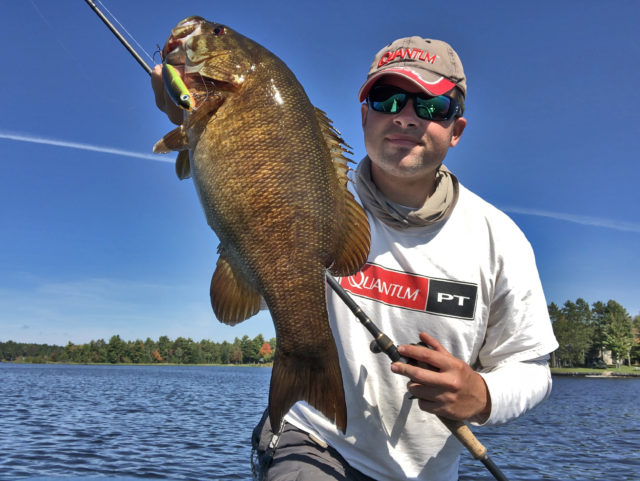
Trophy smallmouth are engaged by size, sound, and what pushes the most water to create an overhead commotion. Manufacturers continue to innovate and reinvent the wheel with new models of poppers, walkers, and prop baits. In 2019, Rapala released an exceptional new topwater, the Skitter V.
Braid and Leader Connections
Most anglers have very poor knot tying skill. It is the most underrated fundamental to successful bass fishing, rigging, and lure presentation. There are several knots in existence. Anglers should only require learning one for attaching leaders, and the second for tying direct to bait.
Finding the perfect braided main line to fluorocarbon leader attachment has often been a personal struggle. For years, I had fumbled with double-uni knots and the painstaking, time-consuming process of winding the FG knot. Through the trials and tribulations of knot tying, I have experimented, developed hints of arthritis, snapped a plethora of leaders and baits off during mid-cast, and struggled with tying the smoothest and strongest braid to leader connection. That all changed with YouTube videos and the discovery of the RP Knot (Royal Polaris / Albright).
The RP knot is one of the timeliest and reliable knots for joining lines of greatly unequal diameters or different materials, commonly fluorocarbon to braided line.
When mastered, tying the RP knot and fusing Cortland fluorocarbon leader material to my Cortland Masterbraid main line takes 20 seconds or less to complete. The knot is exceptionally strong, with smooth line passage through guides. Unlike the double-uni, which has a propensity to snap and catch on guides during mid-cast, the tag end of the RP is concealed and not exposed during line passage, enabling very long casting distances.
Good knot tying skills with fluorocarbon line are a must on our abrasive and clear water, northern smallmouth fisheries. A 3 to 4 ft. lead attached to your main line will conceal the braid, making line invisible, and your drop-shot rigs, jigs, and other sub-surface baits more appetizing to smallmouth.
Take the time each winter offseason to master your knot tying skills by linking braided main line to leader, and discovering new methods. This training will become second nature, making you fish and present baits most effectively and in a concealed manner.
Rod Tip Down!
Smallmouth bass are experts in aerial acrobatics and their leaping ability. When trophy smallmouth clear the air, they exert significant levels of force and power rather than when they are tamed and being controlled underwater. This piece of advice is a simple fundamental that will stick with you forever once you leave my boat.
Nothing saddens and upsets me more than when big fish are lost. Big fish pay a guide’s bills and also lead to a good tip. When rod is up high, smallmouth will throw the hook during, and after a big jump. You can utilize the sharpest hooks, but they won’t make a difference when coupled with the best hook-set and proper drag tension.
Do you fight a big fish with rod tip up, or rod tip down? The primary reason big fish jump in the first place is because the rod tip is being pointed high into the air. Most trophy smallmouth are lost in this scenario. Rod tip angled down exponentially increases the odds of successful landing the big fish.
Consider the physics involved. A rod angled directly into the water prevents fish from jumping, keeping them underwater, and not giving them the inclination to clear the surface to outmaneuver you. When you aren’t in control of big smallmouth with rod pointed into the water, they will be in control of you.
Heartbreakers quickly alter the boat’s mood, enough for the guide to get down, especially when it ends up being biggest fish of the day. “Rod tip down!” I instruct, every time a big smallmouth is hooked and played into the landing net.
Less is More
When I completed one of my university degrees in graphic design, the most important lesson I ever learned is the less is more concept. Presentation and clean visual communication relies upon this fundamental. So too does fishing tackle.
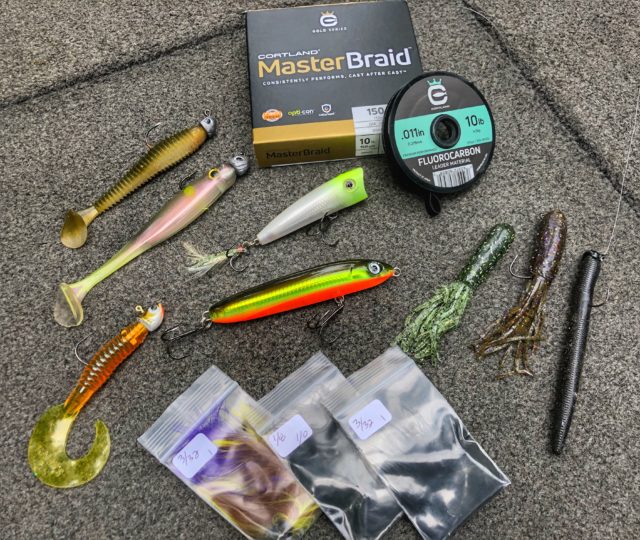
Less is More adheres to bass fishing more than you think. These simple lure selections are what most successfully get me through a grueling summer season of trophy smallmouth fishing.
Forget about the $30 suspending jerkbaits, hundred dollar swimbaits, rigs that are named after states, cities and countries, and the $90K bass boats. Fishing is what you make of it, and none of them are required in order to succeed at any level.
In today’s gizmos and gadgets generation of intricate rigging, lure selections, and high-technical equipment, more anglers are drifting away from the fundamental basics of tackle selection that contributed to making them be successful fishermen in the first place.
During any moment in bass fishing, you will ultimately need a few set-ups for jigging, casting, or rigging. On top of that, you can only use one rod and reel at a time. De-clutter your boats and bait boxes, because on any given day of fishing you will only be using less than 1% of all the fishing tackle you own.
A simplified approach to tackle selection will make you an effective angler. Many bass anglers tend to get carried away and overwhelmed with gear and tackle overload atop their front decks, in addition to prioritizing the wrong things in their fishing approach such as colors, rigs, and too much hardware and flair, rather than focusing on tactics and approach. I have learned I am a more practical and efficient angler when I only have 4 or 5 rods on deck with baits that are working rather than 10 or more rods and dozens of lures scattered on deck that overcomplicates and would otherwise might not be working.
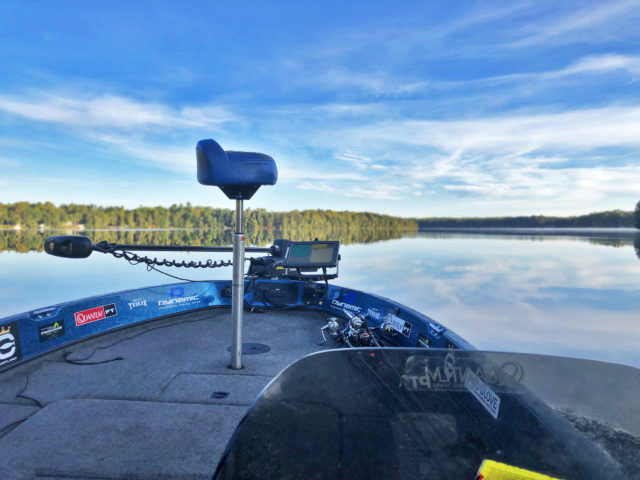
During any moment in bass fishing, you will ultimately need a few set-ups for jigging, casting, or rigging. On top of that, you can only use one rod and reel at a time. De-clutter your boats and bait boxes, because on any given day of fishing you will only be using less than 1% of all the fishing tackle you own.
Bass in the Next Decade
Bass populations and fisheries in well-managed states continue to sustain themselves and withstand fishing pressure, new tackle innovations, technological advancements, the evolution of fishing, and the increase of anglers improving their every-day skills. Fisheries often peak and decline, and so do fishing trends once they become cliché and run their course.
Bass fishing has evolved and changed during each decade of our lifetime. New fishing fads come and go. Only fundamentals, insights, and theories go mostly unchanged until fisheries themselves change first. Most bass fisheries aren’t going anywhere, but you as an aspiring angler can go somewhere. Start by improving your game this next decade and let’s do our next follow-up in 10 years.
Andrew Ragas splits time between the Chicago area and Wisconsin’s Northwoods. Based in Minocqua, WI, he specializes in trophy bass fishing and offers guided trips from May thru October. While big bass is the passion, he dabbles in multi-species as well. He may be visited online at www.northwoodsbass.com


